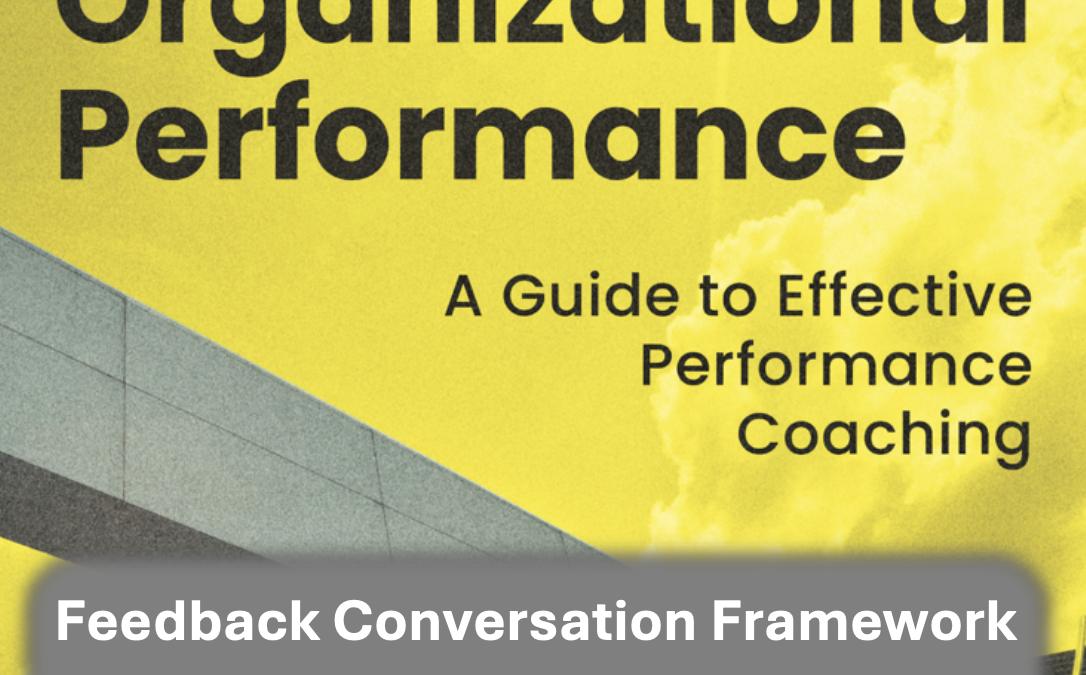Coaching Across Cultures: How to Adapt Your Approach for a Diverse Workforce

The growing global nature of organizations and diversity of workforces demands performance coaching to move past generic models. My twenty years of coaching experience across 27 countries has shown me that cultural factors greatly affect the reception, interpretation, and application of coaching methods.
The majority of coaching frameworks continue to adhere to Western-centered principles which fail to apply across different cultures. The result? Coaching efforts that come from good intentions occasionally produce confusion or damage instead of growth.
This isn’t just a theoretical concern. Studies indicate that coaching which incorporates cultural elements produces 35% superior results compared to standard coaching methods. Organizations that want to develop their diverse talent cannot overlook the need to learn cross-cultural coaching techniques because it is critical.
The Cultural Dimensions of Coaching
Understanding cultural influences on coaching interactions should be prioritized before developing specific coaching strategies. Personal differences take precedence over cultural stereotypes yet specific dimensions persistently affect coaching dynamics.
1. Hierarchy and Authority Orientation
Power distance perceptions regarding authority and status differences significantly shape the interactions within coaching relationships.
Coaches are frequently required to deliver direct advice and professional knowledge in high power distance regions such as parts of Asia, the Middle East, and Latin America.The status and credentials of a coach become crucial elements which lead to the expectation of a more directive coaching style.
Low power distance cultures such as those in Northern Europe and Australia as well as newer trends in North American tech companies require coaching to function as facilitators who help coachees discover their own solutions. Quality questions establish authority instead of providing answers.
Coaching Adaptation: To be effective as a coach you must calibrate your directive and facilitative methods according to cultural norms. High power distance environments require early credibility establishment through structured guidance before moving to a facilitative role as trust builds.
2. Communication Style and Feedback Preferences
Initial observations of cross-cultural differences often reveal themselves through the ways people communicate. Certain cultures favor direct and explicit communication styles while others emphasize indirect and context-based interactions.
Coaching models from Western cultures generally focus on direct feedback methods based on radical candor principles. Direct communication styles may be viewed as disrespectful or harmful to relationships within many East Asian and Middle Eastern cultures and some Latin American societies.
An American coach gave direct feedback to a Japanese executive during my observation. The coach felt the session was effective yet the Japanese executive privately admitted feeling deeply embarrassed because the feedback took place in a public setting where others might hear.
Coaching Adaptation: Messages in indirect communication cultures should incorporate metaphors and storytelling alongside third-person examples. For sensitive feedback points that could lead to face loss if spoken, choose private settings and consider written forms of communication.
3. Individual vs. Collective Orientation
Western coaching frameworks focus primarily on personal success and individual objectives. Personal achievements gain significance in collectivist cultures when they support the group’s harmony and collective objectives.
The team coach in Indonesia experienced confusion because team members demonstrated resistance to setting their own development goals. The breakthrough occurred when team members started to frame personal growth objectives in terms of their benefits to the team and organization.
Coaching Adaptation: When working with collectivist cultures, you should link personal development goals to the team’s and organization’s achievements. The coaching process should include key stakeholders (after receiving proper permissions) and solutions should be developed in a way that maintains relationships instead of solely enhancing individual performance.
4. Relationship vs. Task Focus
In cultures where relationships dominate business practices such as in the Middle East, Latin America, and portions of Asia business interactions require initial personal connection and trust development. Germanic and Nordic countries exhibit task-focused cultures where achieving results and maintaining efficiency are more important than cultivating personal connections.
The dimension plays a major role in determining both the duration and methodology of coaching programs. The initial three coaching sessions were “a waste of time” according to a German executive because they focused on personal history rather than performance challenges. The Saudi Arabian leader contemplated changing their coach who immediately began addressing business matters without first developing a personal connection.
Coaching Adaptation: People from relationship-oriented cultures expect substantial time spent on relationship building before they are willing to discuss difficult performance issues. Task-oriented situations require you to maintain efficient processes yet create enough trust to facilitate challenging discussions.
Five Strategies for Effective Cross-Cultural Coaching
Once you understand these dimensions you can implement five practical strategies to adjust your coaching methods for different cultural environments.
1. Begin with Cultural Self-Awareness
To develop effective cross-cultural coaching skills you need to first identify your personal cultural biases and preferences. Coaches typically measure others against their own cultural standards without realizing it.
A coach from a rather egalitarian Scandinavian culture faced challenges when trying to build rapport with executives from South Korea’s hierarchical organization. We developed coaching adaptations that maintained the coach’s authenticity while acknowledging the hierarchical environment by showing how his egalitarian principles shaped his coaching approach.
Action Step: Determine your preferred cultural characteristics regarding communication methods, authority interaction, and individualistic behavior. These elements represent personal preferences instead of being universally applicable standards.
2. Create Cultural Contracting Conversations
The most effective technique I’ve discovered involves discussing cultural preferences during the formation of the coaching agreement. Establish open conversations about how the coaching relationship should function instead of making assumptions.
Questions like these help establish cultural understanding:
– “How would you prefer to receive feedback?”
– “What has been most helpful in previous learning relationships?”
– “How do people typically address disagreements in your organization?”
– “What makes a coaching relationship feel safe and productive for you?”
Cultural contracting helped a coach working with a diverse multinational team reveal the wide range of team member expectations regarding coaching conversations. Team members from the Middle East expected coaching sessions to include relationship-building and guidance while their Northern European counterparts preferred structured, efficient sessions that concentrated on action planning.
Action Step: Create a list of cultural contracting questions for initial coaching sessions and review these agreements throughout the development of your relationship.
3. Adjust Your Questioning Approach
While questions remain central to coaching practices their effectiveness varies based on cultural differences.
Direct “why” questions often come across as accusatory in cultures that prioritize harmony and saving face such as those found in many East Asian countries. Better insights are usually obtained from hypothetical situations and third-person viewpoints.
Avoid using direct “why” questions like “Why did you make that decision?” To avoid triggering defensiveness you can ask “If someone were looking at this situation what factors might they think influenced the decision?”
Action Step: Increase your questioning techniques by including both direct and indirect methods and monitor which styles generate the most meaningful responses among different people.
4. Leverage Cultural Bridges
Coaches working with individuals from different cultural backgrounds should identify “cultural bridges”—shared experiences and values that cross cultural boundaries.
I once had issues establishing rapport with an Eastern European executive and managed to find common ground through our military service experiences. The use of military metaphors together with shared leadership ideas built trust which overcame our separate communication styles.
Action Step: In your first interactions find shared experiences or interests that can act as connection points when cultural differences create barriers.
5. Adopt a Learning Mindset
It is essential to enter cross-cultural coaching with sincere curiosity and a mindset geared towards learning. Instead of considering cultural misunderstandings as failures, recognize them as opportunities to learn and grow.
The coach felt frustration during sessions with a Brazilian executive who consistently arrived late and devoted substantial time to personal conversations. The coach refrained from negative assessment of these behaviors and instead asked about them to gain valuable understanding of relationship-building in Brazilian business culture.
Action Step: Reevaluate cultural aspects that may have affected your coaching sessions when they seem difficult and then modify your methods based on these reflections.
Beyond Cultural Generalizations: The Individual Always Matters Most
Understanding cultural dimensions helps improve coaching outcomes yet individual differences must always take priority over cultural generalizations. Cultural awareness must act as an initial step toward adaptation while avoiding its use as a strict template for stereotyping.
Your objective as a cross-cultural coach should be to acquire enough cultural intelligence to determine when adjustments to your approach are necessary instead of becoming an expert in every cultural context. Cross-cultural coaching success comes from blending cultural awareness with thorough investigation into individual preferences and needs.
Coaches who balance cultural insights with individual attention build relationships that respect cultural influences and personal distinctions. A combination of cultural intelligence and personal awareness produces superior coaching outcomes which unleash the full abilities of diverse talent.
Organizations that refine their coaching capabilities to be culturally adaptive obtain substantial competitive advantages in the global market. These pathways ensure all talent can succeed irrespective of their cultural origins.


